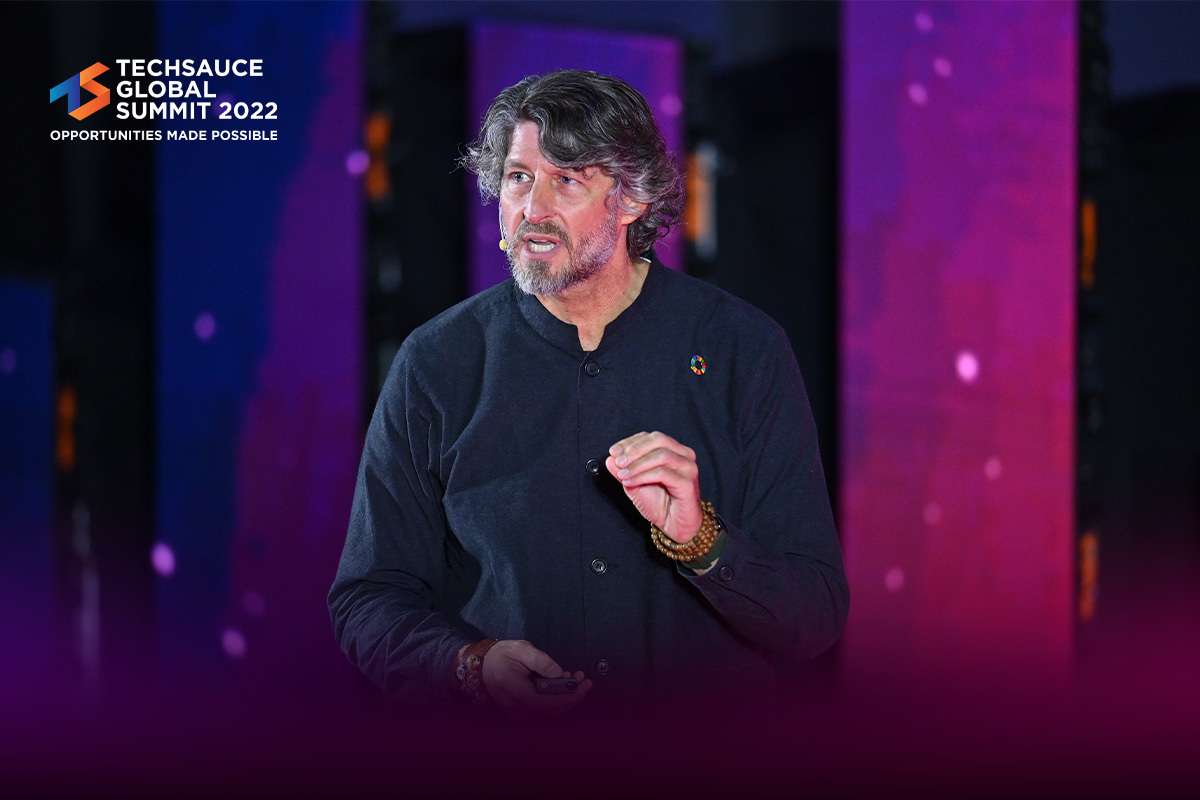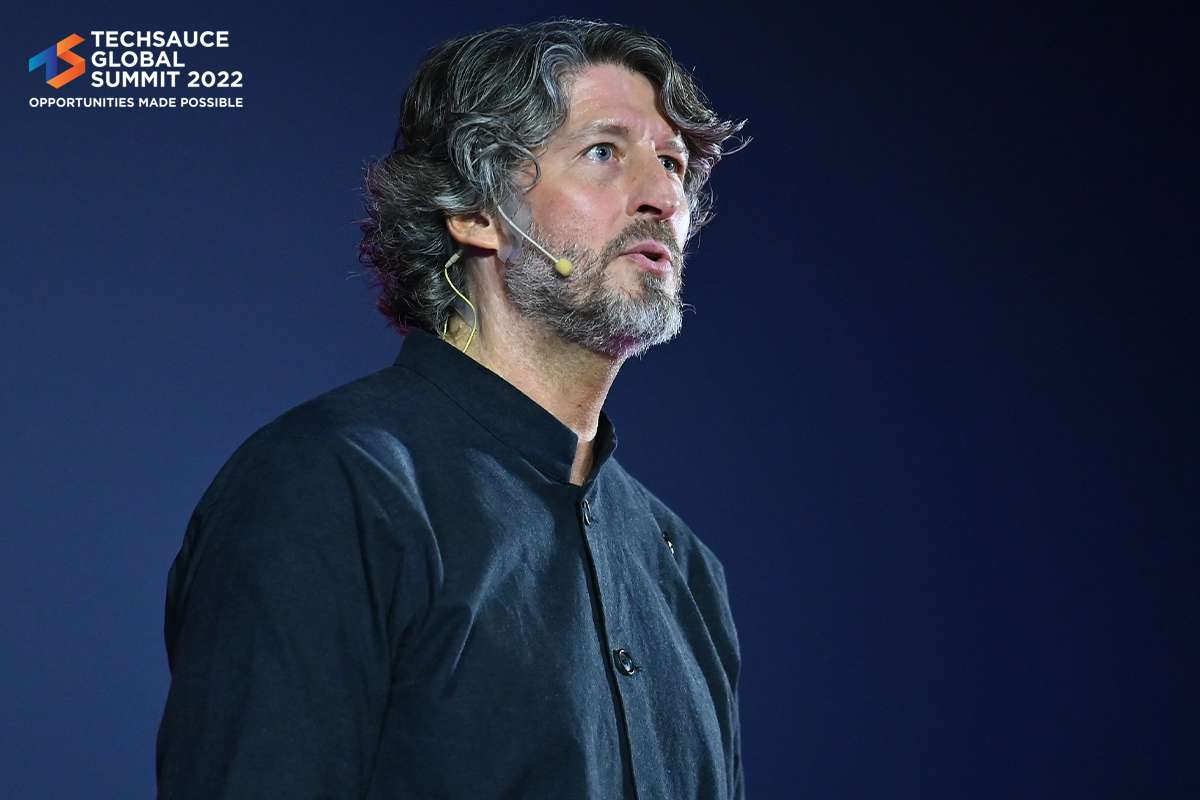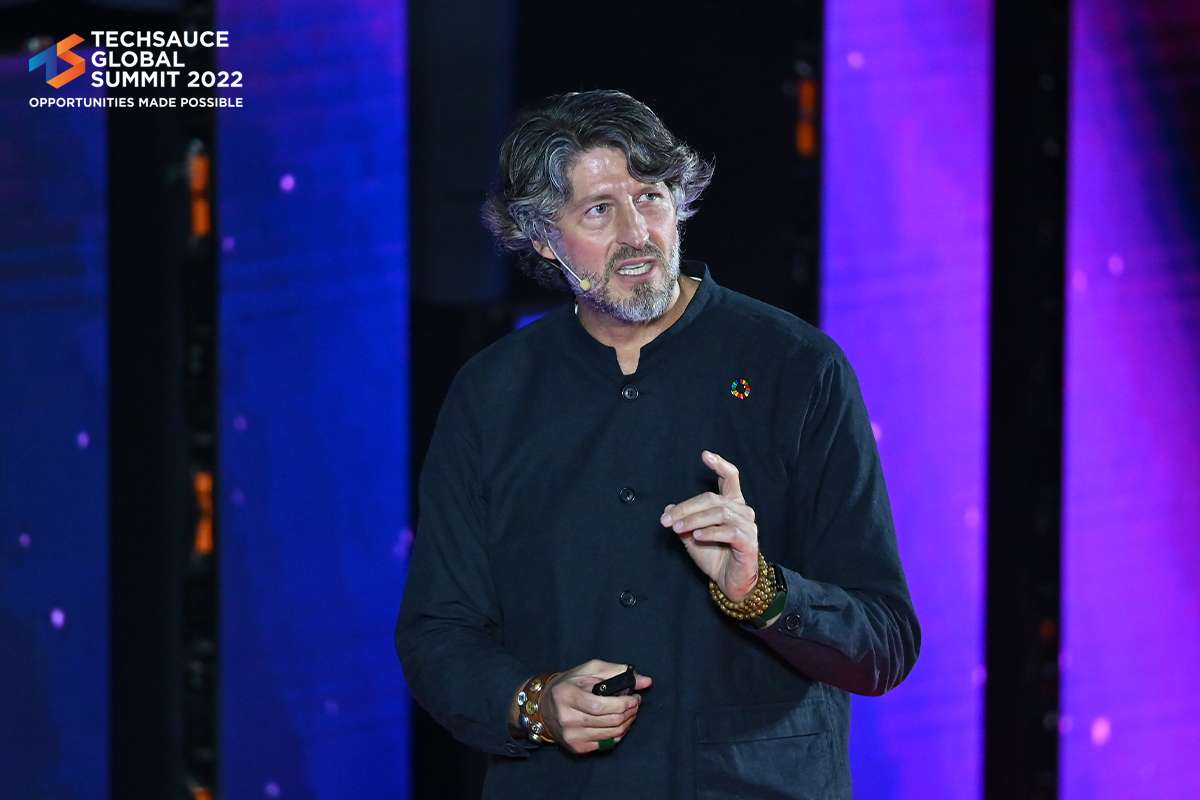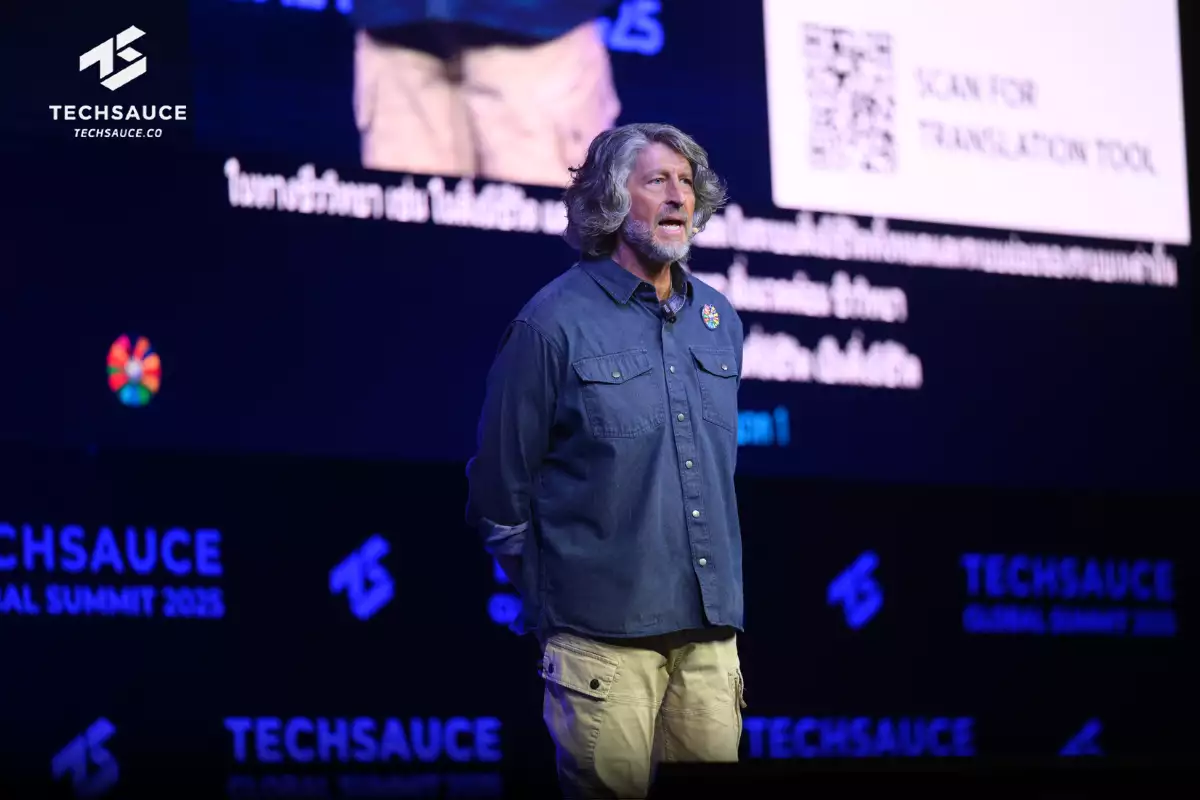Marc Buckley taking “Earthshots” and Inspiring Innovations for Purpose
One of today’s pressing questions is how to make responsible and sustainable impacts. With news every day about the effects of climate change and social inequality, there has been increasing attention paid to sustainable solutions. Environmental social governance has become more and more important to organizations all over the world.

In a session yesterday afternoon at Techsauce Global Summit 2022, Marc Buckley gave the audience inspiration about how to take action towards a better world and how achievable he thinks it is.
Marc is a climate activist, systems expert & ecological economist. He’s worked with the UN, WEF, Inside Ideas, & ALOHAS Regenerative Foundation. He shared his expertise with us by first drawing attention to the United Nations’ Sustainable Development Goals (SDGs). These, he argued, were what paved the way for ESG and the metrics we use. The SDGs provide the answers you need today.
Where do we need to go? What are the solutions?
Marc argued that the ultimate goal is to reach Symbiocene. A concept defined by Glen Albrecht in 2011 which describes a new era of humanity which would be made of harmonious connections between humans and the rest of life on earth. Marc argued that the current “anthropocene”, with human intervention on the climate, has been largely negative.
Marc shared his prediction that true wealth will come with the Symbiocene.
“The world’s first trillionaire will be a green entrepreneur operating in symbiosis with a regenerative platform systems dynamic business model”

He wanted to be clear that he was not talking about capitalism, economics or being a trillionaire, but rather greater wide-scale wealth.
“Every dollar we use to solve human suffering or global grand challenges […] that’s how you can be a billionaire”
How can it be done?
Marc encouraged the audience to ask three vital questions
- “What’s your WHY?” - What’s your purpose for existing?
- “What does a world that works for everyone look like for you?”
- “Before this decade is out, I will do what?”
Our Purpose
It’s easy to ask what we can do or how it can be done. Marc didn’t let these questions get in the way. He said “Our world doesn’t come with an operating manual” but found that R. Buckminster Fuller’s “Operating Manual for Spaceship Earth” could provide a good starting point.
Marc argued that R. Buckminster Fuller had already provided an adequate “why” for us. He had a why - not just for himself but for all humanity.
“To make the world work for 100% of humanity in the shortest possible time through spontaneous cooperation without the ecological offense or disadvantages of anyone.” (R. Buckminster Fuller, 1969)
Visualizing the future
In English, we use “moonshot” to describe something that seems impossible. A pipe dream. But Marc argued that we have already achieved a “moonshot” when we put a man on the moon. Now we should be thinking about an “earthshot”. To imagine the world we want.
On the screen was an image of the earth, the “blue marble.” “How do we even have this image?” He asked,
“We have it because this image is sheer innovation. Had we not gone to the moon, had we not gone to space using the latest technology, the latest innovation, the latest computing power, we wouldn’t even have this picture.”
They achieved the moonshot with technology that didn’t previously exist. Technology that can save our planet. This image was especially poignant because seeing the whole helps us humans realize that we all exist on the same planet together.
Taking action
Marc told the audience a story about his friend Dr. Bertrand Piccard, the first man to fly around the world in a solar-powered airplane. He shared an anecdote where Dr. Piccard was empowered by recognizing that all the technology used in his solar-powered flight had already existed. Solar panels were invented in the 1800s, the Wright brothers built an airplane in the early 1900s. Dr. Piccard just found a way to put it all together. It was inspiring to hear that to invent sustainable technologies, you don’t have to reinvent the wheel, just find a better application.
“We didnt leave the stone age because we ran out of stones. We left the stone age because there’s better ways to do things.”
In a clip of Dr. Piccard speaking to the UN from the solar-powered aircraft, he said “Be pioneers, be adventurers, be explorers of the solutions of today. This is how we can make a better world. Don’t let the resistance take over because we have the solutions”. Having an open mindset will allow us to find other, better ways to do things.
A unique highlight of Marc’s session were his tips on sustainable disruption. He shared a clip to help guide the way of thinking disruptively.
“Every civilization has been built on the same five foundational sectors, information, energy, transport, food, materials. When technology disrupts any of these, change ripples and cascades, challenging our rules, systems and even our mindsets. Our ancestors developed leading civilizations by harnessing these disruptions yet each breakthrough allowed us to become more advanced at extracting scarce resources.”
Each of these foundational sectors have an impact, both large and small, on the others. Innovation in any sector can advance the others with a little creative thinking.
“New technologies will accelerate the collapse of the old. Trapped in tunnel vision, we cling to failing systems, applying band-aid solutions that seals our fate. Only a new lens can reveal the possibilities. Mindsets, institutions, ourselves. We need a new generation of rethinkers.”
We need to go beyond finding solutions to common problems, it’s about reinventing the way we do things. He shared a final clip and, in it, argued that cars didn’t just disrupt the horse and carriage industry.
“Cascading impacts were unleashed, that changed everything. The transport industry was transformed, but so were agriculture, retail, and mining, where we lived and worked. The structure of our cities. Cars transformed war, health, geopolitics, and the environment. They created previously unthinkable possibilities both good and bad.”
There was the caution that “predicting the future based on past trends can help in times of stability, but in periods of rapid change it can lead to big mistakes. Thats because Disruption isn’t a straight line.”
Why, What, How

Towards the end, Marc brought the audience back to the SDGs. He argued that you can’t pick and choose which SDG you want to focus on. They’re all tied together as a system. Working on poverty will help achieve zero hunger, quality education, etc… In this way, we can’t simply break down the SDGs by country because in the end, we’re all on the same planet. “The blue marble”
It’s hard to connect with these goals if we cant imagine the world at the end of the decade, and how it will look if we are able to achieve these goals.
The SDG manifesto that Marc wrote, states,
“Imagine a world where there is no poverty and zero hunger. We have good health and well being, quality education and full gender equality everywhere. There is clean water and sanitation for everyone. Affordable and clean energy has created decent work and sustainable economic growth. Our prosperity is fueled by investments in resiliant industry, innovation and infrastructure and has reduced inequalities. We live in sustainable cities and communities and responsible consumption and production has healed our planet. Climate action has stopped and reversed the warming of our planet and we have flourishing life below water and abundant, diverse life on land. We enjoy peace and justice through strong institutions and have built long-term partnerships for the goals”
So what now?
Marc encouraged the audience by saying there are ways to work towards the SDGs and there is both interest and funding. Being “all together in this game” means that it would take $90Trillion to reach those SDGs. The money is there!
At the climate conference in Glasgow last year, $130Trillion was committed to “the climate heart of finance”. This incredible vow is trillions more than the estimate. This means that “the money is there, the commitment and the will is there – we just have to do it.”
Final thoughts
As a society, Marc shared, we need to get out of the “ego”, move towards the “eco”, but ideally be seva, a sanskrit word meaning regeneration, and selfless service to life. An existence where humans (man and woman) are more than equal with the rest of life on earth and that we’re in selfless service as crew members to steer “Spaceship Earth” and regenerate the future, not just for humans but for all life.
ลงทะเบียนเข้าสู่ระบบ เพื่ออ่านบทความฟรีไม่จำกัด






